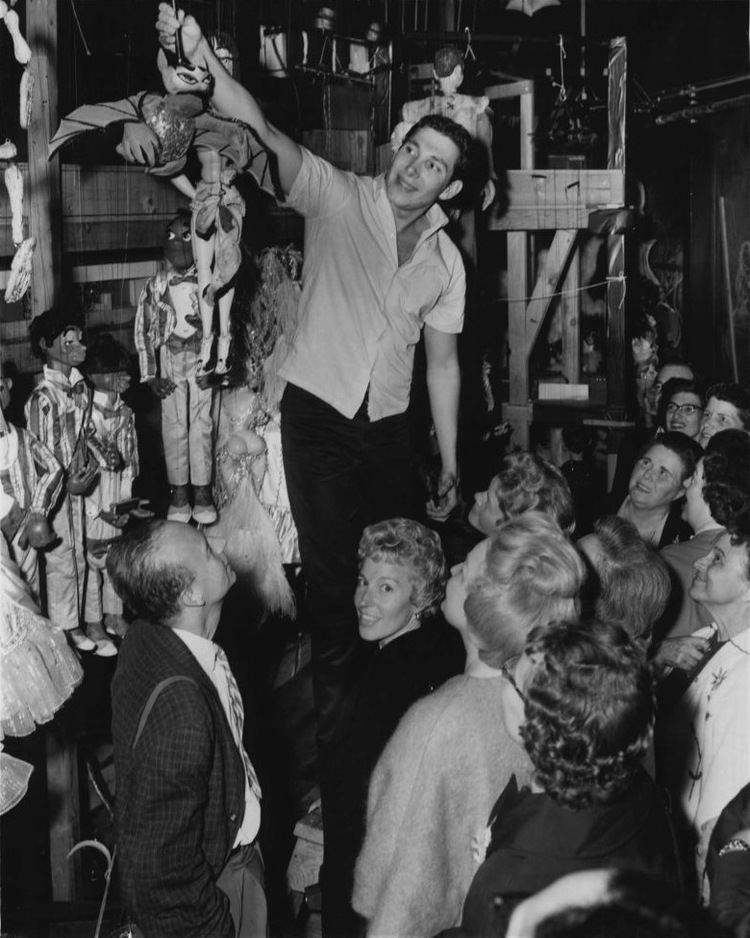Name Sid Marty | ||
 | ||
Born Sid Krofft July 30, 1929Montreal, Quebec, CanadaMarty Krofft April 9, 1937Montreal, Quebec, Canada ( 1929-07-301937-04-09 ) Occupation Producers, writers, puppeteers Website www.sidandmartykrofft.com | ||
Land of the Lost: Sid and Marty Krofft Interview
My interview with Sid and Marty Krofft at 2012 SDCC
Sid Krofft (born July 30, 1929) and Marty Krofft (born April 9, 1937) are a sibling team of television creators and puppeteers who were influential in children's television and variety show programs in the U.S., particularly throughout the 1970s and early 1980s.
Contents
- Land of the Lost Sid and Marty Krofft Interview
- My interview with Sid and Marty Krofft at 2012 SDCC
- Early years
- Television productions
- The World of Sid and Marty Krofft
- Achievements
- TV series
- TV specialspilots
- Direct to video
- Films
- Live shows
- References
They are largely known for a unique brand of ambitious fantasy programs, often featuring large-headed puppets, high-concept plots, and extensive use of low-budget special effects. The team also dominated the arena of celebrity music/variety programs during the period.
Early years
The Krofft brothers, Sid and Marty, were born in Montreal, Québec. For years, they claimed to have been born to a family of fifth-generation puppeteers, but revealed in 2008 that this story was invented by a publicist in the 1940s. Their father was, in fact, a clock salesman who moved from Canada to Providence, Rhode Island, and then to New York City. Sid Krofft became a noted puppeteer who worked in vaudeville and was a featured player with the Ringling Bros. and Barnum & Bailey Circus. In the 1940s, Sid created a one-man puppet show, "The Unusual Artistry of Sid Krofft", and performed it throughout the world. His father joined him on tour in Paris while Marty stayed in New York, where he started using his older brother's puppets to earn money by staging performances. By the 1950s, the Krofft brothers were working together, and in 1957, they developed Les Poupées de Paris, a puppet show with more mature themes.
Television productions
After designing the characters and sets for Hanna-Barbera's Banana Splits (NBC, 1968-1970), the Kroffts' producing career began in 1969 with the landmark children's television series H.R. Pufnstuf. The series introduced the team's trademark style of large scale, colorful design, puppetry, and special effects. Featuring a boy who has been lured into an alternate fantasy world and can never escape, the team also established a storytelling formula to which they would return often.
Some people suggested that the Krofft brothers were influenced by marijuana and LSD, although they have always denied these claims. In a 2005 interview with USA Today, Marty Krofft said, "No drugs involved. You can't do drugs when you're making shows. Maybe after, but not during. We're bizarre, that's all." Referring to the alleged LSD use, Marty said in another interview, "That was our look, those were the colors, everything we did had vivid colors, but there was no acid involved. That scared me. I'm no goody two-shoes, but you can't create this stuff stoned."
The Kroffts also favored quirky superhero stories, often with children involved as the heroes or part of a hero team. Particularly visionary and popular Krofft productions have included The Bugaloos (1970), Lidsville (1971), Sigmund and the Sea Monsters (1973-1975), Land of the Lost (1974), The Lost Saucer (1975), Electra Woman and Dyna Girl (1976), and Wonderbug (1976).
The World of Sid and Marty Krofft
In 1976, a developer asked the Kroffts to develop an amusement park for the new Omni International complex in downtown Atlanta. The World of Sid and Marty Krofft was the world's first indoor amusement park, but due to poor attendance it was closed after just six months. The Omni International building that contained the amusement park was renamed the CNN Center when the site was converted to the present CNN headquarters.
Achievements
The Kroffts' memorable children's programs have developed a wide and enduring following, largely among adults who watched the shows as children. They were also responsible for a large number of prime time music/variety programs. These shows also tended to employ a reliable formula, in this case featuring a celebrity host or team of hosts, weekly celebrity guest performers, flashy and colorful sets, and frequent interludes of scripted banter and gag-driven, "corny," good-natured sketch comedy.
The Kroffts have occasionally departed from their successful formula, notably a new version of Family Affair (2002), and the political puppet satire D.C. Follies (1987). The team has recently attempted to update some of their most popular series for a younger generation, including new versions of Land of the Lost, Electra Woman and Dyna Girl, and H.R. Pufnstuf.
The Kroffts are often acknowledged for the ambitious vision and creativity of their projects. In addition to their recognizably colorful and hyper-kinetic programs, they often created children's shows with complex stories, unusual protagonists, uniquely modern sensibilities, or with darker or more action-themed tones than most children's shows. Their "camp" popularity stems largely from their shows' low-budget production values, the often surrealistic feel of many of the programs, and the uniquely "'70s" style of music and design.
